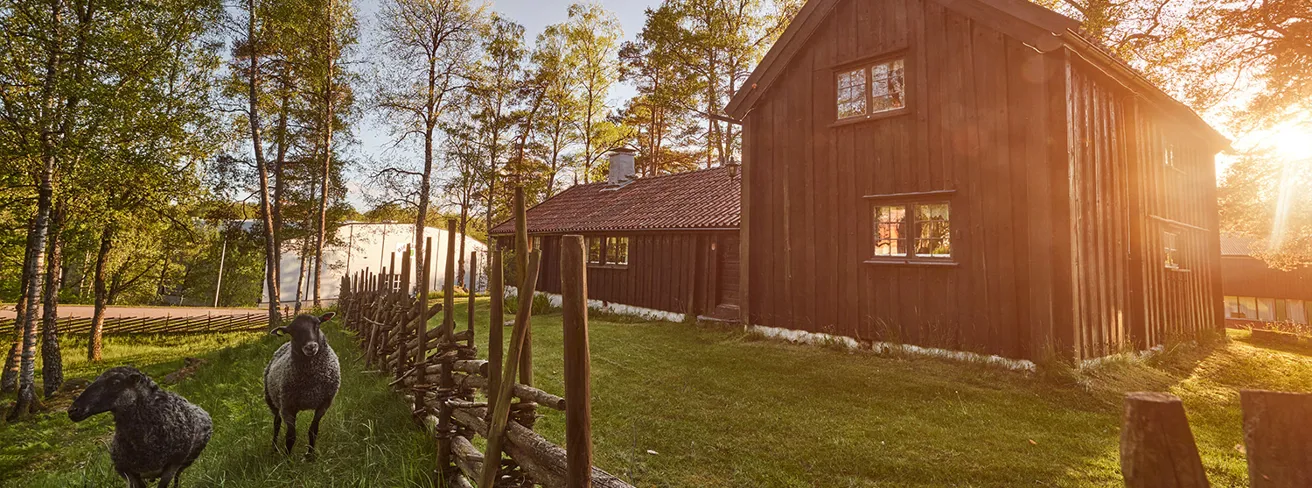
Local heritage centres
In our part of Småland, we have many beautiful local heritage centres where you can experience environments from times gone by.
What were people’s lives like in the past? How did they live? Each local heritage centre tells its own exciting story. During the spring & summer, several of our local heritage centres hold various activities, such as cake buffets & waffle sales. For example, you can learn how to mow grass the old-fashioned way. For more information about activities, visit the Isaberg region's event calendar and the websites and social media of the relevant local heritage centre.
Anderstorps local heritage centre
Anderstorps local heritage centre with its grey timber buildings is beautifully situated on a hill in Anderstorp's community. A cottage from the 18th century with ridgepole and porch chamber can be found here. It is decorated as accommodation and serves as a museum for parts of the collections. The local heritage centre also has an old sawmill with a frame saw and steam engine. In addition to the local heritage centre, you can visit the bee pavilion in northern Bohult, Linders and Törås industrial museum in Anderstorp.
For more information or requests for a guided tour, visit the local heritage centre's website or social media.
Burseryd and Sandvik local heritage centres
In Burseryd you can visit Vickelsbostugan, which is an old loft cottage of the southern gothic type from Vickelsbo village. The single-storey part is a front chamber cottage that has been dated to the 17th century. The two-storey section, which is transverse, has a single floor and was probably built later. There are collections with about 400 objects, including tapestry paintings, old household utensils and furniture, many dating from the 18th century. Outside Sandvik you can visit Rosendalsstugan, which is surrounded by hayfields and Småland style fencing. This is an old retained cottage, probably built in the late 18th century. The cottage is open all year round to visitors. Community haymaking in the old traditional way takes place here during the summer.
For more information or a guided tour, visit the local history association's social media or contact Elsa Hultman by phone: + 46 371-502 80.
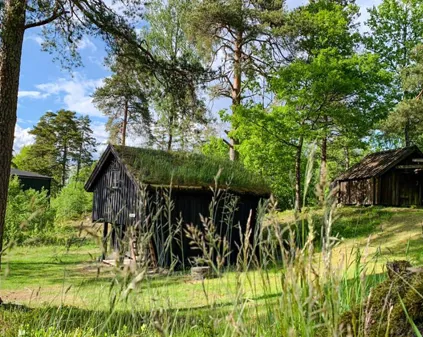
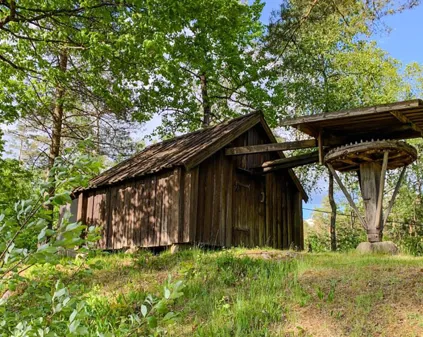
Gislaveds local heritage park
Gislaved's local heritage park is located in the northern part of the community, about 500 metres north of Gislaved's church and consists of about ten buildings. Tingstensstugan was built on the site in 1845. Orrastugan was originally built as a retained cottage for Gislaved's old inn. The cottage was previously located behind the present hotel Nissastigen and was moved to the local heritage park in 1961. The ground floor is furnished as accommodation but on the attic floor there is a school museum in the west room and textile preparation tools in the east room.
Väståkrastugan from the 18th century is a single cottage with a porch chamber and ridgepole. In addition to these buildings, there is a mill, probably from the early 19th century, a warehouse called the Molanderska boden from 1855 and some other smaller buildings. The local heritage association's collections consist of about 600 items. Next to the park is a circle of stones, an ancient type of monument that was previously thought to be a court and meeting area, but today we know that they are graves.
For more information or guided tour, contact Tomas Themar (tomas.themar@telia.com, +46 371-128 60)
Gryteryds Local heritage centre
The old Rumpebolsstugan, which is in its original location, was previously the main building on the Rumpebol farm. The cottage now serves as Gryteryd's local heritage centre. The cottage is from the latter half of the 18th century and is one of the oldest buildings in the area.
For more information or a guided tour, contact Nataschia Würtz (+46 738-352727).
Kållerstad local heritage centre
Kållerstads local heritage centre consists of Hults Bråta, which was once a croft under Klockaregården. The croft is located in its original location and consists of a single cottage and a barn. Hults Bråta is secluded with fields and pastures all around. The land is still cultivated. The residential building is well preserved and is a good example of what a larger crofting location could look like.
For more information or guided tour, contact Solveig Davidsson (solveig.davidsson@gmail.com, +46 371-731 23)
Norra Hestra local heritage centre
The old red-coloured church school is located on a hill opposite the church in Norra Hestra village. The church school is on two floors and has associated outbuildings. On the ground floor of the building, the old municipal hall is preserved and on the upper floor the hall for the small school remains as a school museum.
Other buildings here include an outbuilding from the latter part of the 19th century and an earth cellar from the mid 19th century. Both of these buildings have been built on the site. There is also a flax shed, for drying flax, from dating from the mid 19th century.
For more information or a guided tour, visit their social media or contact Lars-Erik Pettersson (+46 370-33 51 20).
Reftele local heritage centre
This local heritage centre is a small farm facility located in a cultivated landscape, surrounded by pasture.
The farm consists of a single cottage, a barn and a forge. Outside the grounds Ölmestad school can be found, which is a school and local history museum where Reftele local history association holds activities all year round. Not far from the local heritage centre is Reftele's old courthouse site, Brödrahalla. The old Inn is also nearby.
For more information or a guided tour, visit their website, social media or contact Gunvor Nygren (+46 70-830 15 57).
Södra Hestra local heritage centre
This local heritage centre farm can be found next to Södra Hestra vicarage. The farm is located on a hill, surrounded by meadows and deciduous woodland. The single cottage and the galleried storehouse were moved here by the parish church council and the parish owns the land. The other buildings and the collections are owned by the local heritage association. The two buildings that the local history association has moved here are a unique summer barn and a flax shed, i.e. a drying facility for flax.
For more information or a guided tour, contact Leif Petersson (leffe49@bahnhof.se).
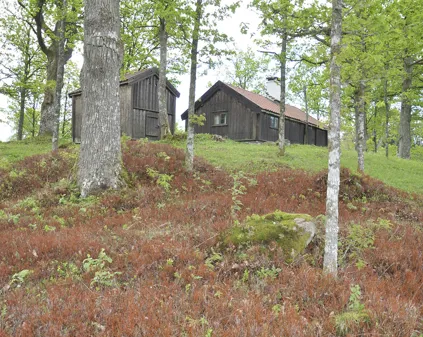
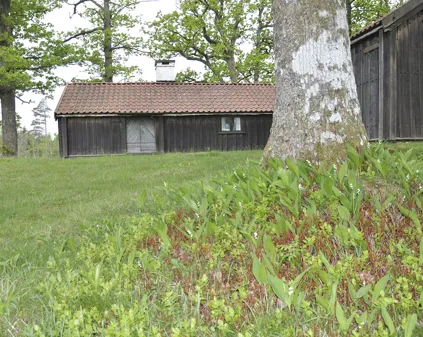
Villstad local heritage centre
Villstads local heritage centre is located in the northeastern part of Smålandsstenar. It is one of the oldest local heritage centres in the country, with seven buildings that have been relocated here. Here you will find a loft cottage, Röshultsstugan from 1778, furnished as accommodation and as a museum, a stall, probably from the 600s, and a flax shed with flax preparation tools.
The local heritage centre houses a large number of old and unique objects, most of them related to the rustic culture of the 18th and 19th centuries in Västbo. The most valuable parts of the collections are stored in a museum building on the grounds. The local heritage association , which celebrated its centenary in 2002, is one of the more active in the country and activities during the summer months include song and story evenings, croft walks, poetry evenings and more.
The well-known ancient monument "Smålands stenar" stands in the Villstad local heritage centre. The burial ground has five stone circles with 6-20 upright stones in each. This type of burial ground is thought to be about 1,500 years old. This field is one of the most prominent stone circle burial grounds in Småland. For more information or a guided tour, visit their website or social media.
Ås local heritage centre
The heritage centre can be found just outside Ås, by Slättahult's old elementary school.
The grounds cover an open meadow area with a deciduous wood. The local heritage centre is a small farm complex and consists of a single cottage from the 18th century. There is also a flax shed, a barn and a mill, all from the mid 19th century and an outhouse from 1924 that belonged to the old elementary school.
The collections comprise about 700 items, many of them decorative paintings. For more information or a guided tour visit, contact the association via their social media.